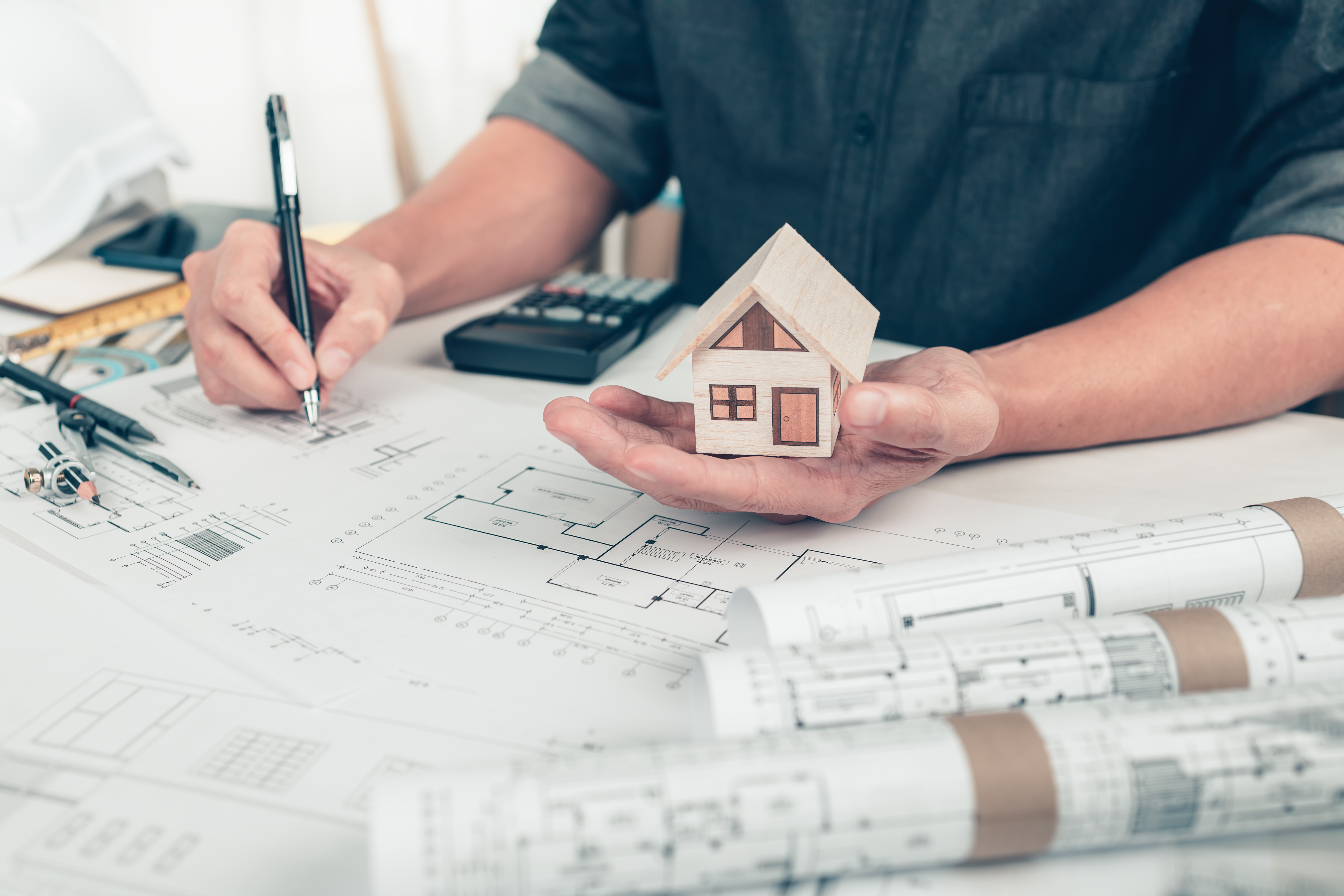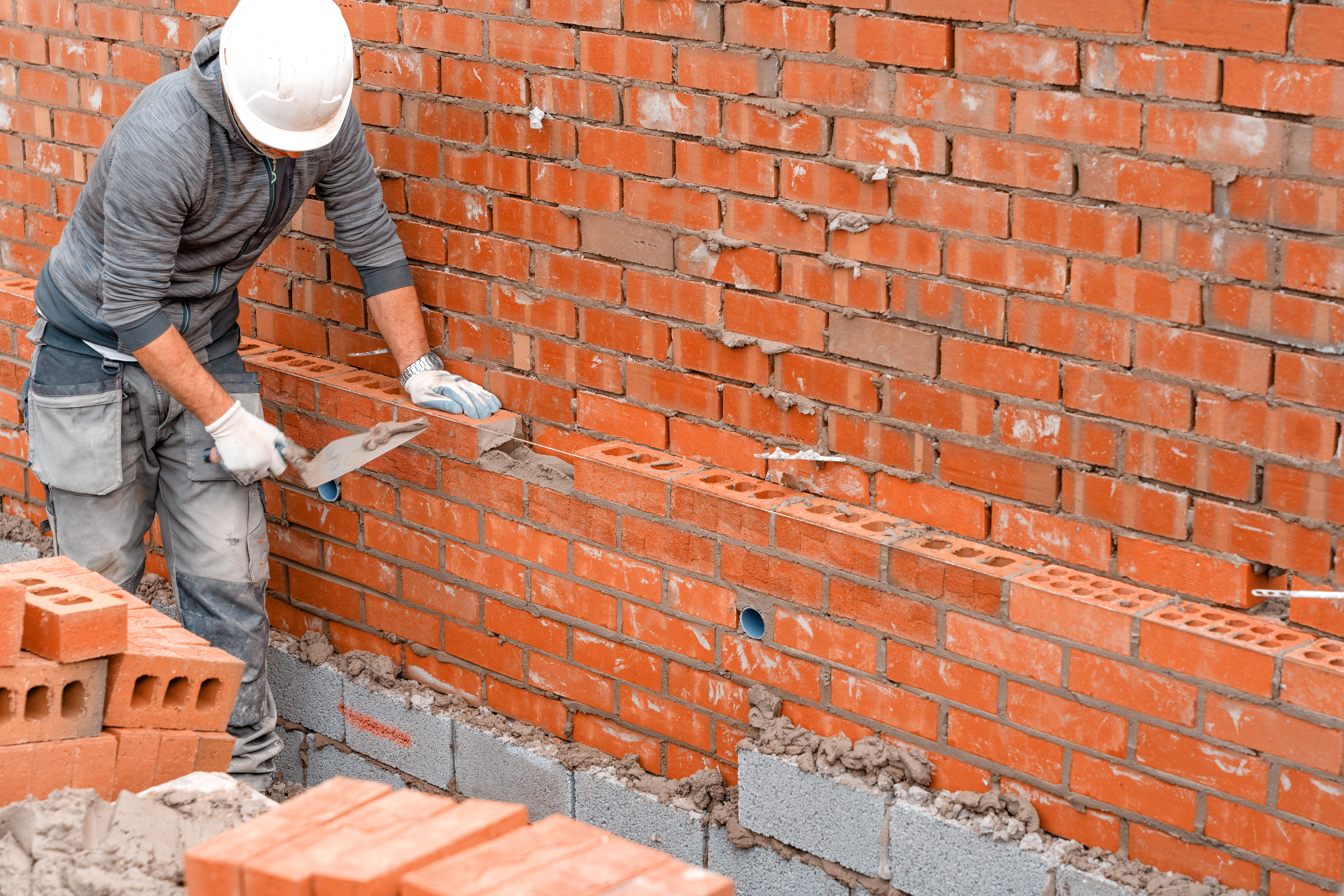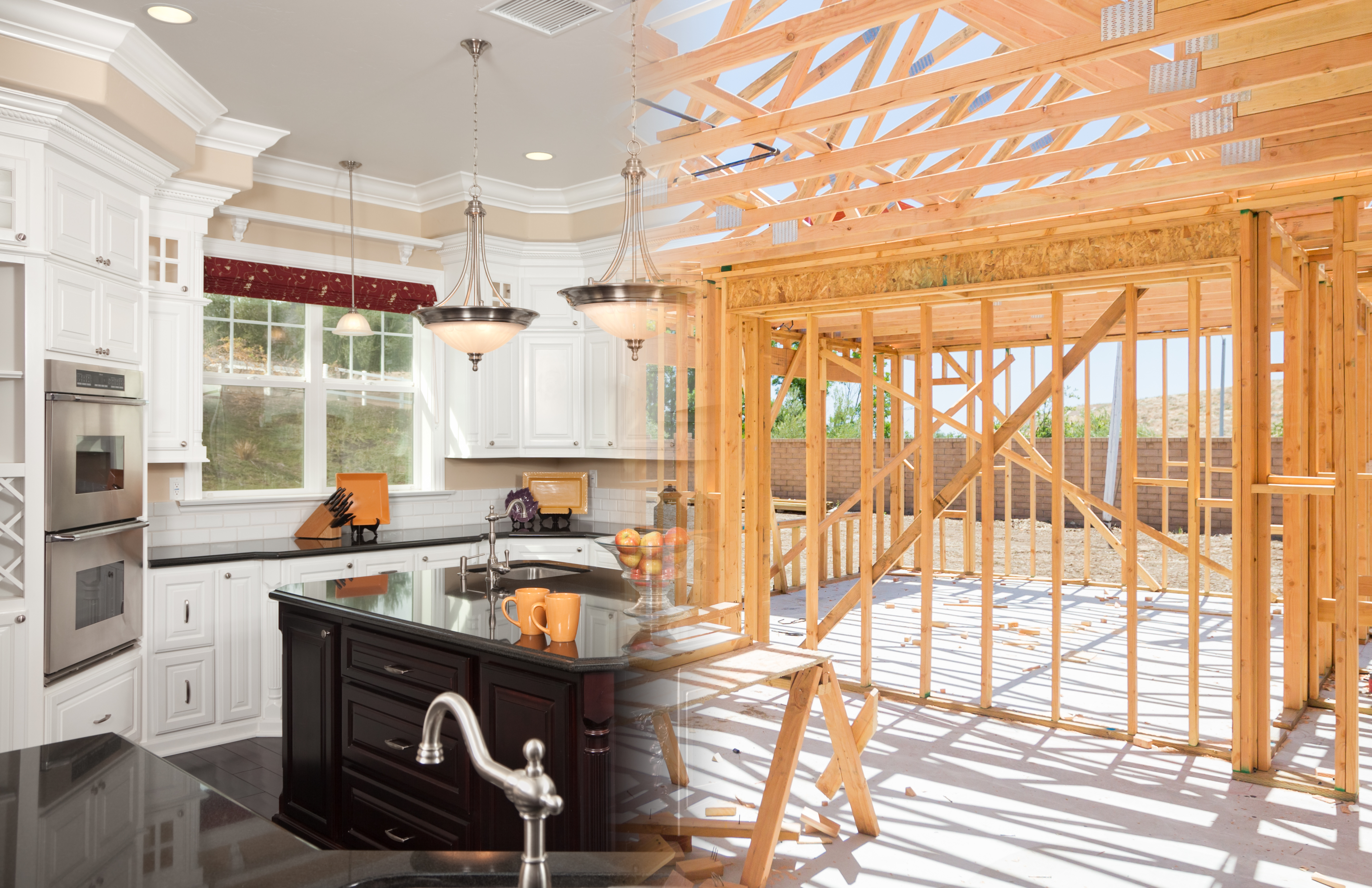
Buying a production home is a relatively easy process. The steps are simple and take little effort on your part: find a new community and builder you like, check out and pick one of the models. Sign the contract, wait for it to be built, and move in!
Building a custom home, however, is much more involved. It’s a major undertaking demanding a lot of your time, effort, and, of course, money. Usually larger and more complex than a production home, a custom home, logically, will take longer to build. In fact, according to the latest available U.S. Census Bureau’s Survey of Construction, the average time it took to take a new home from authorization to completion in 2023 was 8.6 months for a built for sale or spec house, 9.1 months for a contractor-built house, and around 14 months for an owner-built home. Knowing the process of a custom build will help you make more informed decisions when you decide it’s time to build your dream home!
Completion of a true custom home requires significant advanced planning and active involvement on your part. It consists of several major steps or actions that demand your participation and decisions – from finding your dream location to defining, designing, and building your dream home. Only one of these steps (tracking the actual construction of your home) is required when buying a production home.
With a custom home, nothing is pre-planned, pre-selected or pre-designed. As a result, taking a custom home from concept to completion takes significantly more time. It’s more than the actual construction process – or the sheer size of the home – that extends completion time for custom homes. It’s the fact that, by definition, a true custom home means that nothing has been pre-planned.

The Custom Home Building Process
As you will see below, the process of building a custom home also requires several additional steps taken by you, the homebuyer. Let’s review the six steps that you’ll need to remember when you build your own custom home.
1) Fashion Your Dream Home
In the beginning, long before construction, you’ll want to fashion ideas and elements that you envision for your “perfect home.” Collect photos and tear sheets. Tour completed homes. Chat with an interior designer. Begin to outline preferences regarding architectural style, room function, design elements, product features and lifestyle requirements.
2) Select a Builder or Architect
Selecting an architect first who can then help you get bids from potential builders is the next step. Conversely, some custom home builders offer design services or can help you find an architect. To find these professionals, asking everyone you know for recommendations, including local realtors, lenders, building associations, or friends who have recently bought homes is a good place to start.
Before you start construction, you’re going to need a design. You can hire a custom architect or designer or choose from among thousands of pre-drawn designs at Houseplans.com. If you go the latter route, you may need to have some adjustments made (including engineering, stamping, etc.), which aren’t included in the cost, but you can still save time and money compared to starting from scratch.
3) Obtain References
Ask prospective builders for the names of clients, lenders, suppliers, and sub-contractors. Get their opinions: Were they satisfied? Was the project managed effectively? Does the builder pay subs and suppliers on time? What was the quality of construction? Get sample contracts, construction schedules, and warranties from the builder. The more references you have, the closer the final build will be to your vision.
4) Find a Location & Buy Your Land
You’ll need to find and buy land for your custom home. Here, the professionals can help evaluate potential sites as to their suitability for building, available utilities, and potential views.
5) Help Craft the Design
Designing your custom home will require extensive discussions with your architect/designer to analyze the cost/benefit of various options, establish a budget, and finalize specific design and floor plan ideas, features and product elements to be included and that best match your “dream” home.
There is no “typical” time limit for the above elements and none of these are required when purchasing a pre-built production home. The time they take depends on you. Dream building, team/site selection, and home design could take a few months or even years.
6) Track Construction
In addition to the decisions you need to make when formulating your home design with your architect, numerous selections will be required of you during construction. On a typical 12-month building schedule for a custom home, significant buyer input on design decisions, product, and color selections will be required in at least 9 of the 12 months.
Additional Information

Custom Homes are Built in Phases
Rather than defined Steps, Kim Hibbs, owner and general contractor at Hibbs Homes, a custom homebuilder in St. Louis, MO, divides the custom home building process into various phases.
Discovery
The first phase, according to Hibbs, is the “Discovery’” phase. “That’s where we get to know the client and learn what they want to accomplish,” Hibbs explains. Hibbs provides them with a “Needs, Wants and Wishes” worksheet, gives them references, and walks them through homes they’ve built.
At this stage, Hibbs also helps the buyer find a lot, obtain loan approvals, and hire an architect. Kim’s wife, Jan, is a licensed real estate agent for Coldwell Banker Gundaker. However, fifty percent of clients that come to them already have a lot. Kim sets up and attends several client meetings with potential architects to find the best fit.
“This requires a lot of hand holding,” Hibbs admits, “but that’s what a custom home client is looking for. They want to make sure you’re with them in every phase. It’s extremely important that clients deal with the same people throughout the process, and that they don’t feel rushed.”
Design & Budgeting
These phases cover the pre-building process of design and budgeting. In this phase, the firm helps the buyer complete a site analysis, draft a construction schedule, develop a budget, and discuss options. “Architects have been known to over design,” notes Hibbs. “So, in this phase, we want to make sure the architect designs the home to the budget.”
In addition, this is the time when clients are out making selections. There are probably 35 or 40 critical decisions that clients will have to make, with selections, finishes, and colors, according to Hibbs. On a complex home, he notes, it could be as many as 50. So, he adds, “it’s vital to know exactly where to set our allowances for client selections.”
A major option presented by Hibbs to his custom buyers at this stage is to design their home to be a sustainable, energy-efficient “green home.” Hibbs Homes is an Energy STAR partner and a designated RESNET builder. The firm has completed Net Zero Homes and built the first Active House in North America. Hibbs, himself, is a Certified Green Professional through NAHB.
See accompanying article: “How to Build an Eco-Friendly Custom Home.”
Construction
At this stage, construction finally begins. “The construction phase is easy,” notes Hibbs. “If you’ve done everything right – determining needs and desires, finding a lot, going through the design process and the selection phase – the construction phase takes care of itself.”
Hibbs homes typically take about a year to construct but can take anywhere from 6 to 18 months. The number one item that can disrupt the process, Hibbs says, is if the architect does not meet deadlines. Number two is when the buyer does not stay on time making selections.
“As a custom builder,” says Hibbs, “we expect some changes. However, we make sure everyone understands up front that, with a change order, no work will be done in the field until an approval doc is signed and we have a PO from whatever vendor is involved.”
This last phase in Hibbs schedule covers the closing process, a walk-through one week prior to move-in, review of product operation and warranty elements, punch list completion, and move-in.
There is no “typical” time limit for the above elements and none of these are required when purchasing a pre-built production home. The time it takes to build a custom home depends on you. Dream building, team and site selection, and home design could take months or even years, if you let it.
How Long will it Take?

Count on Two Years Overall
The above pre-construction activity alone can take a year, estimates Sheri Scott, Founder and Principal Architect at Springhouse Architects in Dayton, Ohio. The actual construction of your custom home can take an additional year, she says.
In short, in addition to a lifetime spent dreaming of and visualizing your ideal home, the actual planning and building process can take up to two years.
Preliminary design through construction documents can take three to six months depending on how prepared the client is, Scott notes. “We say a full year,” She explains “because this gives us time to make all the selections and revisions. If, for example, we started designing a house in the fall – doing a lot of the [architectural] work through winter – and then, in summer, the client decided they wanted a pool and access to the pool deck. This would give us time to design a house that lives well for them throughout the year.”
A lot of Springhouse clients come with a site already in hand. “Often it’s the first thing they do,” Scott says. “But we like to be involved in selecting a site. What’s best is for them to have a few sites in mind and already know what they want in their house and living on the site. Then, we like to help them make the final decision based on the slope of the site, the sun orientation, size, and privacy.”
For the design process, consumers should bring their site information and details on any neighborhood boundaries or regulations. In addition, Scott asks them to bring “a ton of pictures to communicate what they want in their new home. They’ll have a list of how many bedrooms and bathrooms they need, but pictures better communicate the [design] feeling they are looking for in their new home.”
For bidding, contractor interviews and negotiation, Springhouse allows three months. “Right now,” Scott says, “because the building industry is so busy, we like to bring in a builder early, right after preliminary design, to get their input on cost savings and scheduling and to get on their books. We try to direct consumers on questions they should ask during bidding meetings and interviews.”
Allow One Year for Construction
Actual building time of a custom home can take twice as long as an off-the-shelf production home, according to Scott. “We get the most questions during framing, so during framing we are out on the site every week,” the architect says. “However, our clients are involved in every step of the building process and a lot of interior material selections are done after we’ve started construction because it feels different [more real] when you are in the framed house making those decisions.”
Prepping the site and pouring the foundation, normally three weeks for production homes, may take longer since custom home locations tend to need more tree removal and/or are on sloped land that may need erosion controls and more extensive leveling. In addition, a custom home’s foundation will likely be larger and more intriguing than that of a production home.
Likewise completion of rough framing, sheathing, and roofing; installation of electrical wiring, security systems, plumbing pipes, vents, and rough mechanicals; and installation of insulation — all of which takes about four weeks on a production home — will take longer simply because a typical custom home is larger, more complex, and requires higher craftsmanship and more extensive products and materials.
The same applies to the installation of exterior brick or siding, windows, doors, drywall, interior trim, flooring, lighting, plumbing fixtures, appliances, HVAC installation, and landscaping. If you are texturing your walls that will take a small amount of time.
In addition, a custom home may call for more sophisticated green and energy-efficient construction, high-tech sound and entertainment systems, wine cellar, fitness room, outdoor kitchen, safe room or storm shelter, slate or concrete roof tiles, granite countertops, or an elevator. It might also require the design of spiral or elaborate staircases, extensive outdoor decking or a swimming pool.
Timeline Variables
Construction time for your new home can also vary greatly due to several factors:
The size and complexity of your home design, as well as the competence and efficiency of your builder, can impact building time.
Permits. How long it takes to get building approvals and permits varies greatly depending on the local city or county building department.
Shortages of available supplies or subcontractors can stall construction.
Site conditions. Building on a prime but hilly lot or in an earthquake, mudslide, or fire hazard zone, will also add to building time. Construction also generally takes longer in rural areas than in metro areas with ready access to supplies and labor.
Bad weather with heavy rain, snow or freezing temperatures can cause major delays in construction.
A common and serious contributor to the time it takes to design and build a custom home is the length of time it takes the homeowner to make options and design selections and decisions as required, says Scott. Following product and material ordering and lead times is vital. Delayed decisions – or worse, late change order requests – can seriously impact the completion of your custom home, Scott adds.
Bottom line: Make all selections ahead of time and don’t make changes.
Approximate Custom Home Building Timeline
Below is a rough breakdown of each step in the process of completion of a custom home and an estimate of the time each element may take:
Pre-construction: 9 – 12 months
Assemble the team (get architect/builder references, bids) – 3 months
Obtain a site – 2 months
Design (style, floor plan, options, selections) – 3 to 6 months
Permits and loan approval -1 month
Construction: 12 months*
Documents (plans, specs, bids and contracts) – 2 months
Site prep (clear, grade, level and stake) – 1 month
Foundation (pour footings, foundation, basement, slab; install drain tile) – 1 ½ months
Rough carpentry (frame walls, floors, roof; install sheathing, house wrap) – 2 months
Install HVAC – 1 month
Rough plumbing, electrical, audio/video, security – 2 ½ months
Roofing, exterior siding/brick/trim, windows, doors – 1 ½ months
Insulation and drywall – 1 ½ months
Prime, caulk, paint – 3 months
Flooring, cabinets, trim, hardware – 4 months
Cleaning, punch list, closing: 1 month
Note: The construction times shown total 21 months. However, many of these activities take place concurrently.
For the most part, this is a step-by-step process of what you should expect if you’re building a custom home. Interested in learning more? Click here to learn more about custom homes, and here to see our glossary of home construction-related terms.

James Klingele
James Klingele holds a Bachelor of Science in Digital Media Innovation from Texas State University. He is a digital media specialist and content creator with a passion for storytelling in both print and digital formats. His work has included covering high-profile events like SXSW, where he contributed to content creation for global audiences. He has been a content specialist for NewHomeSource since 2024.